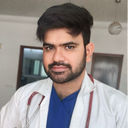Kawasaki Disease: Overview of Symptoms and Treatments
Kawasaki Disease is a rare illness affecting children, causing fever, rash, and inflammation in blood vessels. Learn the symptoms, risks, and treatment options for a safe recovery.

Written by Dr. J T Hema Pratima
Reviewed by Dr. Rohinipriyanka Pondugula MBBS
Last updated on 21st Aug, 2025

Kawasaki Disease is a rare but serious condition that primarily affects young children, causing inflammation in the blood vessels. While it can be alarming for parents, early diagnosis and treatment can help prevent complications. In this article, we’ll break down what Kawasaki Disease is, its symptoms, causes, and available treatments in simple terms.
What is Kawasaki Disease?
Kawasaki Disease is an illness that leads to swelling (inflammation) in the walls of medium-sized blood vessels throughout the body, including the coronary arteries that supply blood to the heart. It mostly affects children under the age of 5, though older kids and adults can sometimes develop it too.
The exact cause of Kawasaki Disease is still unknown, but experts believe it may be triggered by an abnormal immune response to an infection or environmental factors. It is not contagious, meaning your child cannot catch it from another person.
Symptoms of Kawasaki Disease
The symptoms of Kawasaki Disease usually appear in phases. Recognizing them early is crucial for timely treatment.
Early Symptoms (First 1-2 Weeks)
- High fever (above 101°F or 38.3°C) lasting for 5 or more days
- Red eyes (without discharge)
- Swollen, red lips and tongue (often called "strawberry tongue")
- Red, swollen hands and feet
- Rash (usually on the torso, groin, or limbs)
- Swollen lymph nodes (especially in the neck)
Later Symptoms (After 2 Weeks)
- Peeling skin on fingers and toes
- Joint pain
- Abdominal pain, diarrhea, or vomiting
- Irritability (especially in younger children)
If your child has a persistent fever along with some of these symptoms, consult a doctor immediately.
How Does Kawasaki Disease Affect Health?
If left untreated, Kawasaki Disease can lead to serious complications, particularly affecting the heart. The most concerning risk is coronary artery aneurysms (bulging of blood vessels), which can increase the chances of blood clots, heart attacks, or long-term heart problems.
Consult Top General Practitioner
However, with early treatment, most children recover fully without lasting damage.
Diagnosis and Treatment
Since there is no single test for Kawasaki Disease, doctors diagnose it based on symptoms and by ruling out other illnesses. Tests may include:
- Blood and urine tests (to check for inflammation)
- Echocardiogram (to monitor heart health)
- Electrocardiogram (ECG) (to check heart function)
Get Your Test Done.
Treatment Options
The main goal of treatment is to reduce inflammation and prevent heart complications. Common treatments include:
1. Intravenous Immunoglobulin (IVIG) – A special antibody treatment given through a vein to reduce inflammation.
2. Aspirin – Used in high doses initially to lower fever and swelling, then in low doses to prevent blood clots.
3. Corticosteroids or other medications (in severe or resistant cases).
Most children respond well to treatment and recover within a few weeks. However, follow-up heart check-ups are essential to monitor long-term effects.
How Can Parents Help?
While Kawasaki Disease cannot be prevented, parents can take steps to support their child’s recovery:
- Follow the doctor’s treatment plan strictly.
- Ensure proper hydration and rest during recovery.
- Monitor for any new symptoms (like chest pain or breathing difficulties).
- Attend all follow-up appointments to check heart health.
When to See a Doctor?
If your child has a prolonged fever (more than 4-5 days) along with other symptoms like rash, red eyes, or swollen hands/feet, seek medical help immediately. Early treatment makes a big difference!
Need Expert Advice?
If you suspect Kawasaki Disease or need a specialist consultation, you can book an appointment with a pediatrician or cardiologist through Apollo24|7. Early diagnosis and care can help your child recover safely.
Final Thoughts
Kawasaki Disease can be scary, but with prompt medical attention, most children recover completely. Knowing the symptoms and acting quickly is the best way to protect your child’s health. If you have any concerns, don’t hesitate to reach out to a healthcare provider.
4795c3aa-cd58-4076-a081-f1d3ee044417
Consult Top General Practitioner
Dr. Gaddam Manoj
General Practitioner
1 Years • MBBS
Hyderabad
Aaradhya clinic, Hyderabad

Dr. Bhukya Pavan Kalyan
General Physician
5 Years • MBBS DNB Paediatrics
Bengaluru
PRESTIGE SHANTHINIKETAN - SOCIETY CLINIC, Bengaluru

Dr Syed Mateen Pasha
General Physician
2 Years • MBBS
Bengaluru
PRESTIGE SHANTHINIKETAN - SOCIETY CLINIC, Bengaluru
Dr. Rubina Fatima
General Practitioner
1 Years • MBBS MD (Forensic Medicine)
Hyderabad
Dr Rubina Fatima Clinic, Hyderabad

Dr. Madhuri Sai Sreepada
General Practitioner
9 Years • MBBS
Hyderabad
BRIGHT SMILES MEDICARE & DENTAL CARE, Hyderabad
4795c3aa-cd58-4076-a081-f1d3ee044417
Dr. Gaddam Manoj
General Practitioner
1 Years • MBBS
Hyderabad
Aaradhya clinic, Hyderabad

Dr. Bhukya Pavan Kalyan
General Physician
5 Years • MBBS DNB Paediatrics
Bengaluru
PRESTIGE SHANTHINIKETAN - SOCIETY CLINIC, Bengaluru

Dr Syed Mateen Pasha
General Physician
2 Years • MBBS
Bengaluru
PRESTIGE SHANTHINIKETAN - SOCIETY CLINIC, Bengaluru
Dr. Rubina Fatima
General Practitioner
1 Years • MBBS MD (Forensic Medicine)
Hyderabad
Dr Rubina Fatima Clinic, Hyderabad

Dr. Madhuri Sai Sreepada
General Practitioner
9 Years • MBBS
Hyderabad
BRIGHT SMILES MEDICARE & DENTAL CARE, Hyderabad